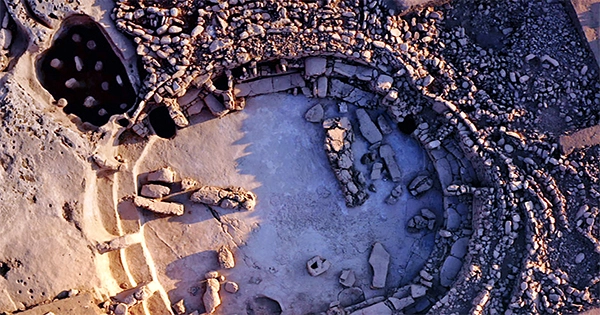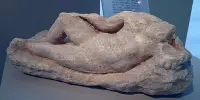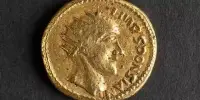You have to feel sad for the people of Başbük, Turkey, in the southeast. It’s bad enough to discover you’ve been living above an ancient fertility cult for the last three millennia – but finding out because someone was attempting to rob you shows Fate has a vengeance against you. Archeologists have now shown the first views of the valuables held inside, five years after authorities prevented looters’ attempts to ransack the site. Researchers describe “a remarkable processional panel […] etched on the rock wall,” which features eight local Iron Age gods and goddesses, in a report published today in the journal Antiquity.
That isn’t even the most exciting aspect. The panel was found in Turkey, and the artwork includes inscriptions in Aramaic, the local language, yet the deities’ style is definitely Assyrian, a civilisation that began hundreds of miles east in Mesopotamia. While the gods in procession appear to have been drawn according to local customs, they contain gods from all around the Neo-Assyrian Empire, including the region’s oldest portrayal of the Syrian goddess Atargatis.
In a statement seen by IFLScience, Dr. Selim Ferruh Adal, a philologist from the Social Sciences University of Ankara and co-author of the paper, said, “When the Assyrian Empire exercised political power in south-eastern Anatolia, Assyrian governors expressed their power through art in Assyrian courtly style.” “The incorporation of Syro-Anatolian religious themes demonstrates Neo-Assyrian components being adapted in ways that were not expected from prior findings,” he added. “They harken back to an earlier period of Assyrian influence in the region, when regional characteristics were more prominent.”
So far, four deities have been identified: “The Başbük procession tableau opens from right to left with the main male deity, Adad (or Hadad), represented in the’storm-god’ tradition of northern Syrian and south-eastern Anatolian iconography,” the researchers say. They claim Hadad may be recognized by his triple lightning fork and circling star, but notably by the inscription “Hadad” next to his face. The scholars claim that his consort is an “Itar-type goddess.” The fact that she bears Itar’s signature star-topped double-horn crown doesn’t necessarily indicate she is Itar — and because of the inscription on her head, we know she is Atargatis, the Syrian mother-goddess of fertility.
The moon deity Sîn, crowned with a crescent and full moon and the final of the three designated deities, stands behind Atargatis. The sun deity ama is fourth in line, according to the papyrus, with no inscription but recognized by his winged sun-disc crown. The researchers add that the remaining four deities “cannot be properly recognized.” Two of them seem almost like Kubaba and her husband Karhuha, but not enough to be certain – Karhuha, fourth from the right, is missing his signature shield and spear. Kubaba, the sixth in the procession, appears to be related to some form of lightning symbolism that the experts haven’t observed previously.
The procession concludes with a god wearing a crown with a big, double-lined circle, presumably “representing an astral entity,” according to the researchers, who also speculate that “the figure may be a moon deity.” Despite the fact that they look to be a female goddess, the academics believe they are related to the god Nusku, son of Sîn. The names of the gods aren’t the only ones carved into the panel: the researchers also discovered what they believe is the name “Mukn-aba.” He served as an official under Adad-nirari III, King of Assyria from 811 to 783 BCE, and the team believes he was granted the authority of the territory when the Neo-Assyrian Empire conquered it.
The researchers believe he commissioned the panel as a method to merge the two cultures in order to win over locals. However, if such was the case, the team believes he was not effective. The panel was never completed, implying that something went wrong – maybe a revolution or the installation of a less favorable local ruler. Whatever occurred, the team is hoping that further investigation would give more information on the half-finished discovery.
“The processional panel, which would have welcomed guests in the top gallery,” they add, “has yet to reveal all of its mysteries.” “By depicting Assyrian-Aramean cohabitation and symbiosis in a location and time under solid Assyrian imperial rule, the Başbük panel provides students researching imperial peripheries with a compelling example of regional values in the exercise of imperial power portrayed via monumental art.”















